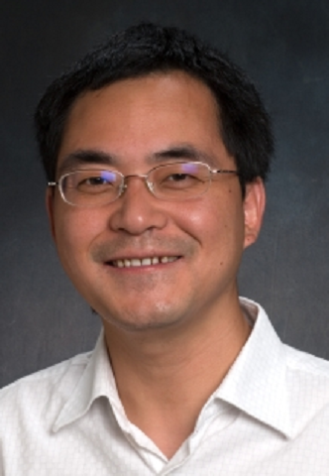报告题目(Title):空天地一体化信息网络新架构和关键技术
报告人(Speaker):Professor J. Andrew Zhang(张健)
单位(Affiliation):School of Electrical and Data Engineering/ Global Big Data Technologies Centre Faculty of Engineering and Information Technology | University of Technology Sydney
报告时间(Time): 12月22日(周五)下午3:00
报告地点(Location): 南京邮电大学物联网科技园大楼西五楼,
通信技术研究所会议室
摘要(Abstract):
一个典型的空天地一体化网络可分为三层:由各种轨道卫星构成的天基网络,由飞行器构成的空基网络,以及传统的地基网络包括蜂窝无线网络、卫星地面站和移动卫星终端等等。该一体化网络能够充分利用空间大覆盖、视距低损耗传输等特点,实现全球三维空间的无缝高速通信覆盖。对于天基网络卫星之间的通信,目前学界比较认同的是采用激光通信。卫星和空基网络(飞行器)之间也可以采用光通信。现有的激光通信系统已经可以基本满足天基内部、天基与空基之间、甚至空基内部节点间的通信。当然卫星仍然可以保留使用一定的传统无线频段来直接为地面的卫星移动终端提供低速连接。限制传统卫星通信速率的主要瓶颈是频谱带宽及频谱复用率。在传统微波频段(例如Ka),带宽只有3GHz 左右。由于频谱及功率效率的限制,通信速率很难有更大的提高。由于卫星距地面很远,再小的通信波束到达地面时的覆盖范围也会很大,比如,500公里低轨卫星的2度波束将覆盖半径约8.5公里的圆形区域,因此频谱复用效率很低。
本讲座将介绍我们正在研究的一个全新的空天地一体化信息网络的网络架构,并讨论其中的关键技术研究,从而实现:1)低成本网络构建; 2)高容量通信包括骨干网络点对点连接达到100Gbps速率;3)低延迟、高可靠性动态组网;4)高效数据压缩和融合。这个网络新架构包括使用以毫米波混合阵列作为空基地基之间的通信连接,以低成本的空基网络作为天基和地基网络的中继,以及通过动态波束成型技术把蜂窝网络小区的概念引入垂直空域及其地面覆盖。我们将重点介绍毫米波混合阵列及相关的信号处理技术。
报告人简介(Biography):
Dr J. Andrew Zhang (M'04-SM'11) received the B.Sc. degree from Xi'an JiaoTong University, China, in 1996, the M.Sc. degree from Nanjing University of Posts and Telecommunications, China, in 1999, and the Ph.D. degree from the Australian National University, in 2004.
Currently, Dr. Zhang is an associate Professor in School of Computing and Communications, University of Technology Sydney, Australia. He was a researcher with Data61, CSIRO, Australia from 2010 to 2016, the Networked Systems, NICTA, Australia from 2004 to 2010, and ZTE Corp, Nanjing, China from 1999 to 2001. Dr. Zhang's research interests are in the area of signal processing for wireless communications and sensing, and autonomous vehicular networks. He has published more than 120 papers in leading international Journals and conference proceedings, and has won 4 best paper awards for his work. He is a recipient of CSIRO Chairman's Medal and the Australian Engineering Innovation Award in 2012 for exceptional research achievements in multi-gigabit wireless communications.
南京邮电大学通信与信息工程学院 通信技术研究所
2017年12月20日

